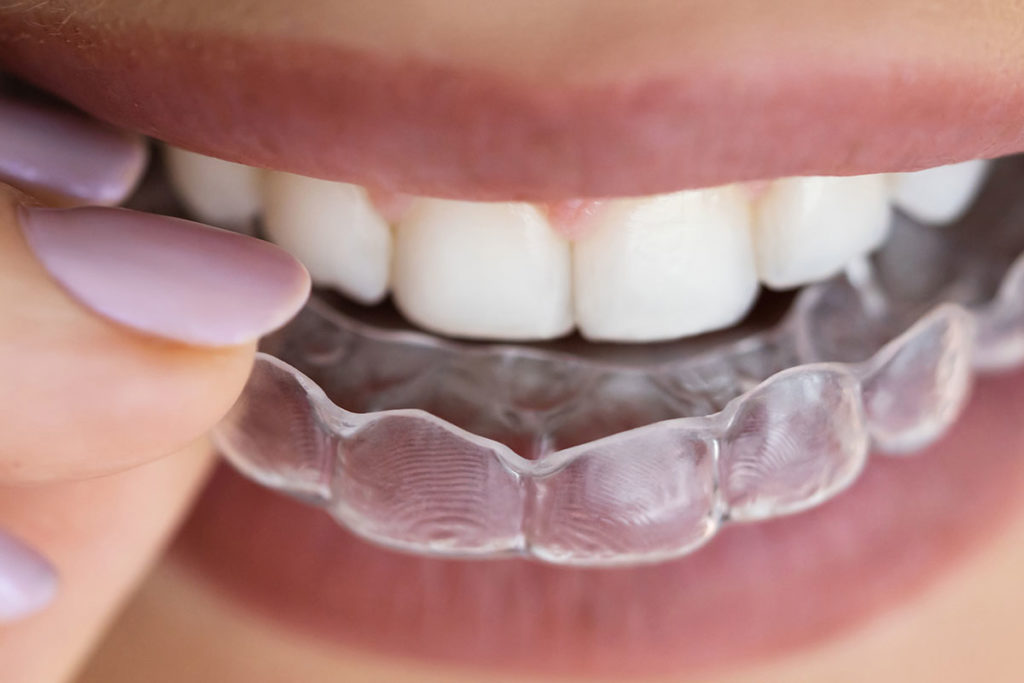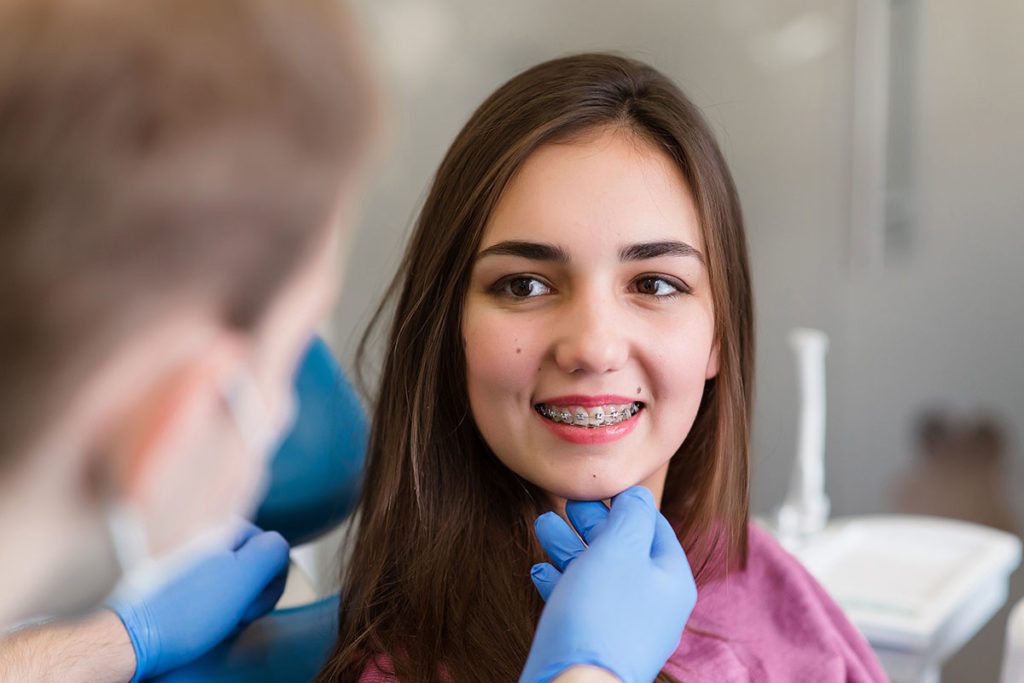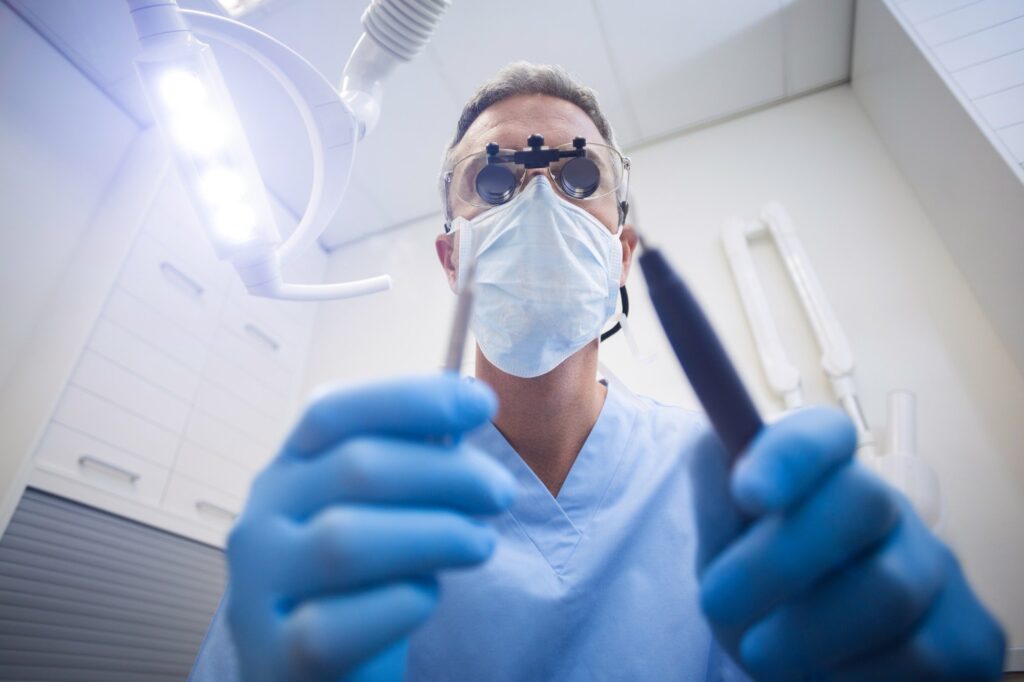A radiant smile is more than just aesthetics; it’s a reflection of your oral health and confidence. One of the primary factors contributing to a dazzling smile is the alignment of your teeth. In this article, we’ll explore the world of Orthodontic Treatment and delve into the various solutions available for Smile Correction.
Understanding Teeth Alignment
Teeth alignment is not just about straight teeth. It encompasses:
- Proper bite alignment, ensuring the upper and lower teeth meet correctly.
- Even spacing between teeth, preventing overcrowding or gaps.
- Correct jaw alignment, ensuring optimal function and aesthetics.
Misaligned teeth can lead to various issues, from difficulty in cleaning and increased risk of decay to jaw pain and speech problems.
Orthodontic Treatment: More Than Just Braces
When people hear “orthodontic treatment,” they often think of braces. But the world of orthodontics has evolved, offering a plethora of solutions:

- Traditional Braces:
- Metal brackets and wires that gradually move teeth into the desired position.
- Effective for treating severe misalignments.
- Learn more about the cost of braces here.
- Invisalign:
- Clear, removable aligners tailored to fit your teeth.
- Offers more flexibility and aesthetics compared to traditional braces.
- Dive into the comparison between braces and Invisalign here.
- Retainers:
- Custom-made devices that hold teeth in their new position after braces.
- Can be removable or fixed.
- Nightguards:
- Protect teeth from grinding or clenching during sleep.
- Essential for those with alignment issues that cause bruxism. Learn more here.
Smile Correction: Beyond Orthodontics
While orthodontic treatments play a pivotal role in smile correction, other treatments can enhance the results:
- Teeth Whitening: A brighter smile can complement perfectly aligned teeth. Discover the magic of teeth whitening at Casey Dental.
- Dental Implants: For those with missing teeth, single-tooth implants can restore the smile and ensure proper alignment.
- Regular Cleanings: Maintaining aligned teeth requires regular care. Ensure you get dental cleanings to keep your smile radiant.
Braces 101: Age Considerations and Treatment Duration

Braces have become a rite of passage for many, symbolizing the transition from childhood to adolescence. However, with advancements in orthodontic treatments, braces aren’t just for teenagers anymore. Let’s address two of the most frequently asked questions about braces.
- What Age is Best for Braces?
- Children: Orthodontic evaluations can start as early as age 7. Early evaluations allow orthodontists to spot potential issues and intervene with treatments that can guide proper jaw growth and tooth alignment. This phase is often referred to as “interceptive orthodontics.”
- Teenagers: This is the most common age group for braces. Most of the permanent teeth have erupted by the early teenage years, making it an ideal time to address alignment issues.
- Adults: It’s never too late for braces! More adults are seeking orthodontic treatments to correct misalignments, improve oral health, and boost confidence. The options range from traditional metal braces to more discreet alternatives like Invisalign.
- In essence, the “best” age for braces varies based on individual needs. A consultation with an orthodontist will provide personalized recommendations.
- How Long Do Braces Take to Straighten Teeth?
The duration of orthodontic treatment with braces varies widely based on the complexity of the alignment issues. Here’s a general breakdown:- Mild Cases: For minor misalignments, treatment might last as short as 6 to 12 months.
- Moderate Cases: The average duration for many individuals is around 18 to 24 months.
- Severe Cases: Complex issues, such as significant overcrowding, underbites, or overbites, might require 2 to 3 years of treatment, sometimes longer.
- It’s essential to note that while braces correct the position of the teeth, retainers are often needed post-treatment to maintain the new alignment.
Investing in Your Smile: The Cost and Value of Braces
Orthodontic treatments, while beneficial, often come with significant financial considerations. One of the most common questions potential patients ask is about the cost of braces and whether the investment is truly worth it. Let’s dive into these concerns.
- How Much Do Braces Cost?
The cost of braces varies widely based on several factors:- Type of Braces: Traditional metal braces tend to be less expensive than ceramic braces or more advanced systems like Invisalign.
- Duration of Treatment: Longer treatment times might increase the overall cost.
- Geographical Location: Prices can vary based on where you live. For instance, urban areas with higher living costs might have higher orthodontic fees.
- Additional Procedures: Some patients might need extractions, spacers, or other procedures, which can add to the cost.
- For a detailed breakdown, especially tailored to Pennsylvania, you can explore the cost of braces at Casey Dental.
- Are Braces Worth the Money?
While the upfront cost of braces might seem daunting, it’s essential to consider the long-term benefits:- Improved Oral Health: Properly aligned teeth are easier to clean, reducing the risk of cavities and gum disease.
- Boosted Confidence: A straight smile can enhance self-esteem, impacting social interactions and even career opportunities.
- Prevention of Further Issues: Addressing misalignments can prevent more severe dental problems down the line, potentially saving money in future dental treatments.
- Enhanced Functionality: Correcting bites can improve chewing and speech, leading to better digestive health and clearer communication.
Navigating the Costs: Types of Braces and the Factors Behind Their Pricing
Orthodontic treatments have evolved over the years, offering patients a variety of options to choose from. However, with these advancements come varying price points. Let’s explore the most affordable types of braces and understand why braces, in general, carry a significant cost.
- What Type of Braces Are the Cheapest?
- Traditional Metal Braces: These are often the most affordable option. Comprising metal brackets and wires, they have been used for decades and are known for their effectiveness in treating a wide range of dental misalignments.
- Self-Ligating Braces: Similar to traditional braces, but they use clips instead of elastics to hold the wire. They might be slightly more expensive than traditional braces but can sometimes reduce the number of dentist visits required.
- Ceramic Braces: These are similar in structure to metal braces but use ceramic that blends with the teeth, making them less noticeable. They are typically more expensive than metal braces but offer an aesthetic advantage.
- Lingual Braces: Placed behind the teeth, they are virtually invisible but can be more expensive due to their custom-made design and the specialized treatment required.
- Invisalign: Clear, removable aligners tailored for the patient. They offer flexibility and aesthetics but are often more expensive than traditional braces.
- While traditional metal braces are usually the most cost-effective, it’s essential to consider other factors like treatment duration, aesthetics, and comfort when making a decision.
- Why Are Braces Still So Expensive?
Several factors contribute to the cost of braces:- Customization: Each patient’s dental structure is unique, requiring a tailored treatment plan. This customization involves specialized tools, materials, and expertise.
- Duration: Orthodontic treatments often span months to years, requiring regular check-ups and adjustments.
- Equipment and Materials: The materials used, especially for the more advanced or aesthetic options, can be costly.
- Expertise: Orthodontists undergo extensive training beyond dental school to specialize in teeth alignment. Their expertise is a significant factor in the cost.
- Overhead Costs: Running an orthodontic practice involves various expenses, from staff salaries to equipment maintenance and rent.
Conclusion: Embrace the Journey to a Perfect Smile
Teeth alignment is a journey, not a destination. Whether you’re considering braces, Invisalign, or other orthodontic treatments, the goal is a healthier, more radiant smile. With expert solutions from clinics like Casey Dental, you’re in capable hands, ready to embark on the path to perfect teeth alignment.
Frequently Asked Question
What are the different orthodontic treatment options available for teeth alignment?
The article explores various orthodontic treatments beyond traditional braces, emphasizing that teeth alignment involves more than just straightening teeth. It covers proper bite alignment and even spacing. The options discussed include different types of braces and other smile correction solutions, each suited to individual needs and conditions.
How do age and treatment duration affect the choice of braces?
Age and treatment duration are important factors in choosing the right type of braces. The article highlights ‘Braces 101: Age Considerations and Treatment Duration,’ explaining that while braces are often associated with adolescents, adults can also benefit from them. The duration of treatment can vary based on the severity of alignment issues, with some cases requiring longer periods than others.
What are the financial considerations when investing in orthodontic treatment?
The financial aspect of orthodontic treatment is covered under ‘Investing in Your Smile: The Cost and Value of Braces.’ The article discusses the types of braces available and the factors influencing their pricing. It advises on navigating costs effectively, considering the value of a well-aligned smile not just in terms of aesthetics, but also overall oral health.


